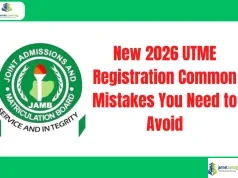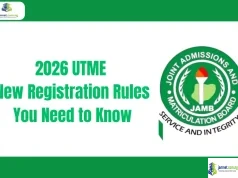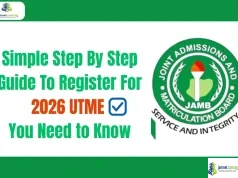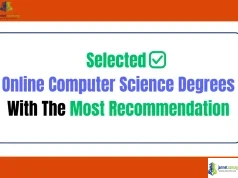This guide provides a six-step framework for creating a competitive research proposal, ensuring all critical elements are covered. Key steps include crafting a compelling Executive Summary and Problem Statement, defining precise Research Questions and Objectives, rigorously reviewing literature to identify the Knowledge Gap, developing a justified Methodology that includes a critical self-assessment of Limitations and Delimitations, addressing all Ethical Considerations and project risks, and finally, detailing the project’s Timeline, Budget, and critical Dissemination and Impact Plan.
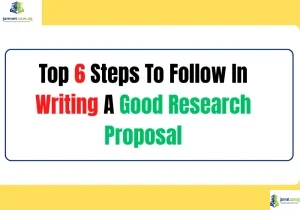

The Top 6-Step Guide to Writing a Competitive Research Proposal

Join our Telegram Channel for Instant Scholarship Updates
The research proposal is your most critical academic document; it demonstrates your potential as a researcher and your ability to lead a complex project. This guide provides a robust, six-step framework to ensure your proposal is persuasive, clear, and comprehensive.
Step 1: Craft the Executive Summary and Introduction
This section serves as your powerful first impression. While the Executive Summary (Abstract) is written last, it appears first and must encapsulate the entire project.
- Executive Summary (Abstract): Write a concise, stand-alone summary (typically 150-300 words) covering four key items: the primary research problem, the core question, the proposed methodology, and the anticipated major contribution or impact.
- Introduction and Problem Statement: Introduce the general field and clearly establish the problem statement that your research intends to address. Explain the strategic fit—how your project aligns with the goals or strengths of the host institution or funding organization.
Step 2: Identify the Research Question and Objectives
This step defines the focus of your work, ensuring it is specific, feasible, and relevant.
- Research Topic: State the specific domain or subject area you will investigate.
- Core Research Question(s): Define the central question(s) your project seeks to answer. These should be clear, concise, and focused.
- Research Objectives/Aims: List the measurable, specific outcomes you intend to achieve. These may be presented as testable Hypotheses, Propositions, or a detailed sequence of aims. Ensure these objectives directly address the research question.
Step 3: Review the Literature and State the Gap
Prove that you are fully aware of the existing academic conversation and that your work is necessary.
- Systematic Review: Analyze and critique the most relevant existing literature. Group previous works thematically or chronologically to show clear comprehension.
- Demonstrate Familiarity: Show that you understand the seminal works and current debates within your field.
- Originality and Gap: Crucially, explain exactly where the current research ends and where yours begins. Explicitly identify the gap in existing knowledge that your project will fill, thereby justifying its necessity and original contribution.
Step 4: Develop a Justified Research Strategy and Methodology
This section details the operational plan for your project. Reviewers will assess feasibility and intellectual rigor here.
- Research Strategy: Explain your chosen research design (e.g., quantitative, qualitative, experimental, theoretical modeling). Clearly justify why this approach is the most effective way to answer your research question.
- Data Collection and Analysis: Detail the specific methods and tools you will use to collect and analyze data (e.g., surveys, interviews, statistical packages, thematic coding).
- Critical Self-Assessment (Limitations and Delimitations): Demonstrate critical self-awareness by defining the boundaries of your study (Delimitations, e.g., only studying one industry) and acknowledging the potential weaknesses of your approach (Limitations, e.g., reliance on a small, non-random sample). Explain how you will mitigate these risks.
Step 5: Address Ethical Considerations and Risk Assessment
This is a mandatory section that shows responsibility and foresight, especially for research involving human participants or sensitive data.
- Ethical Review: State your plan for obtaining ethical approval from the relevant institutional review board (IRB).
- Participant Management: Detail how you will manage key ethical concerns, including achieving informed consent, ensuring voluntary participation, and minimizing any potential harm.
- Data Security: Explain the protocols for ensuring the confidentiality, anonymity, and secure storage of collected data in compliance with relevant privacy regulations.
- Project Risks: Identify procedural or resource-based risks (e.g., difficulty recruiting participants, equipment failure) and propose practical mitigation strategies.
Step 6: Finalizing: Resources, Impact, and Legacy
This final step brings together the practical management of the project with a high-level view of its eventual contribution.
- Schedule and Resources: Provide a realistic, detailed project timeline showing specific milestones for all research stages. If required, include a feasible budget that accounts for all necessary resources.
- Anticipated Impact and Contribution: Define the dual contribution of your work:
- Academic Impact: How will this research advance or challenge existing theories in your field?
- Societal/Non-Academic Impact: How will your findings benefit policy, industry, practice, or the wider public?
- Dissemination Strategy: Detail your plan for sharing the results with the relevant audiences (e.g., target peer-reviewed journals, specific industry conferences, public engagement activities).
- References and Bibliography: Ensure a complete and consistently formatted list of all sources cited, following the required academic style (e.g., APA, MLA, Chicago).
Conclusion
The journey to securing funding or approval for your research culminates in a polished proposal that is both scientifically rigorous and strategically persuasive. By systematically following these six steps, you move beyond merely outlining your plan; you demonstrate critical thinking, ethical responsibility, and a clear vision for the impact and legacy of your work. This comprehensive structure ensures you cover all criteria expected by top academic reviewers, transforming your idea into a concrete, fundable project.
Frequently Asked Questions (FAQs)
What is the most common mistake in a research proposal? The most common mistake is failing to clearly articulate the research gap the project fills, making the research seem redundant or unnecessary.
How long should the Executive Summary be? Typically 150 to 300 words. It must be able to stand alone and summarize the problem, method, and contribution.
What is the difference between a Limitation and a Delimitation? A Limitation is a potential weakness or constraint inherent to the methodology (e.g., small sample size). A Delimitation is a choice you make to define the scope (e.g., only studying a specific age group).
Should I include a budget if the funding body doesn’t explicitly ask for one? Yes, it’s generally advisable to include a brief, justified budget to demonstrate the financial feasibility and planning rigor of your project, even if optional.
When should I write the Executive Summary? The Executive Summary should always be written last, even though it appears first in the document, to ensure it accurately reflects the finalized proposal.
What should the Dissemination Plan include? It should list specific target journals, academic conferences, and non-academic activities (like policy briefs or public outreach) where the results will be shared.
What model should I use for Ethical Considerations? The proposal must address four key areas: Informed Consent, Voluntary Participation, Data Anonymity/Confidentiality, and Data Storage Security.
How do I make my research question original? Focus on intersecting two previously unconnected areas, applying an existing theory to a new context, or challenging a widely held assumption in the literature.
What is a “Hypothesis” vs. a “Research Objective”? A Hypothesis is a testable statement predicting a relationship between variables. An Objective is a general aim or goal the research seeks to accomplish.
Is the literature review just a summary of previous work? No. It must be a critical analysis that synthesizes previous work and identifies the specific void (the “gap”) your research will fill.

